What’s Midwest Modern and why does it like downtown Lafayette so much?
Plus, WL mayor promises veto if council passes second attempt at a facial recognition software ban. And planned 402-bed complex ready to go in Purdue’s Discovery Park District
Thanks to Lafayette Rotary and its Founders 1905 Coffee Company project for sponsoring today’s edition of Based in Lafayette. For more about the coffee – roasted and packed for Lafayette Rotary by Copper Moon, with proceeds going to charitable projects in the community – scroll through this edition.
THE GUY BEHIND MIDWEST MODERN AND WHY DOWNTOWN LAFAYETTE IS ONE OF HIS FAVS
Joshua Lipnik set off a small social media storm, localized at the 47901 ZIP Code and emanating from there, when he started paying compliments to downtown Lafayette on a social media feed he labels Midwest Modern.
The Michigan native and landscape designer offered the kind of review the visitor’s bureau probably already has pinned on the bulletin board:
“Lafayette is one of my favorite small city downtowns. Beautiful architecture, good shops and restaurants, and they managed to avoid a lot of the worst parts of urban renewal that destroyed other cities.”
From there, Lipnik collected a series of placemaking photos of Lafayette’s architecture and vintage structures and signs – and a few not so vintage examples, as in the faux ruins of the Pop-n-Wash car wash on Indiana 38 – during a recent stop along Interstate 65 for his Midwest Modern project and more than 86,000 followers on Twitter.
Question: Tell me a bit about Midwest Modern. How did you get started? And what did you intend it to be?
Joshua Lipnik: I’ve been photographing buildings and exploring places for as long as I can remember, but it was some time in 2018 that I started to share my photos on Twitter. I started out posting architecture from Detroit, then other cities in Michigan, then eventually I started traveling to other states. I never had much of an intention at first, I just thought it would be fun to share my photos with some people who had similar interests. At some point I realized that it had grown into something bigger, I started posting more regularly, and it just kept growing from there.
Q: How do you get it done? How, I guess, do you map out your visits to a town or a region? How many miles do you put on?
Joshua Lipnik: When I visit a new city I always have a few buildings or places mapped out, usually historic buildings on the National Register of Historic Places or buildings designed by important architects. I try to find places that are spread out around different parts of the city. This allows me to see the entire city, and it’s when I’m walking or driving between these destinations that I get to discover the new buildings or places that I didn’t have planned out ahead of time.
Q: What do you tend to look for when you pull into a new place?
Joshua Lipnik: I always start by walking around the downtown core, whether it’s a big city downtown like Detroit or Cleveland or a small town main street. After that I try to see some of the historic residential neighborhoods and look for interesting old houses. Once I’ve seen the core of the city I will drive around some of the outlying neighborhoods and commercial corridors, like Sagamore Parkway in Lafayette. This is where you tend to find things like vintage diners, regional chain restaurants and old neon signs. One thing I always try to look for in a new place are the local icons, the places that anyone who lives or grew up there would immediately recognize. So for example, in Lafayette that would have been Triple XXX Restaurant or a drive-in like Dog n’ Suds. I try to find a good balance between “serious” architecture and what I think of as the architecture equivalent of “Diners, Drive-Ins and Dives.”
Q: You mentioned that Lafayette is one of your favorite small city downtowns? What makes it that way?
Joshua Lipnik: Lafayette has just done a great job of keeping its downtown core intact. So many cities have destroyed their downtowns, either through freeway construction, demolition for parking lots or misguided urban renewal projects, and Lafayette has for the most part avoided those mistakes. There’s also a beautiful and varied housing stock close to downtown, from small apartment buildings to the old mansions of the Ninth Street Hill Historic District to the Victorian rowhouses along South Street. All of this has created what seems to be a thriving community of shops, restaurants, bars and other small businesses.
Q: When were you in Lafayette? And what stops did you make while you were here? I hope you had a chance to grab a bite somewhere.
Joshua Lipnik: I was in Lafayette around the middle of January this year. I tried to see as much of the city as I could. I spent a lot of time walking around the downtown area and some of the older residential neighborhoods. I went over to West Lafayette and saw the Purdue campus. I even explored some of the areas farther out along Sagamore Parkway and around Tippecanoe Mall.
I was able to grab a bite while I was in town. I had a burger at Triple XXX and Chinese food at Oishi in West Lafayette, and got some pastries from O’Rear’s Pastry Shop and Sweet Revolution Bake Shop, and it was all great.
Q: Among small city downtowns, what are, say, your three favorites? And why do they rate?
Joshua Lipnik: I always say that my favorite place is the last place I visited, and of course there are tons of great cities outside of the Midwest. So, I’ll just mention two of my favorite downtowns that I’ve visited in the past year: Kalamazoo, Michigan, and Youngstown, Ohio. These are two very different places, with unique histories and much different urban trajectories.
I like Kalamazoo for many of the same reasons I like Lafayette/West Lafayette. The downtown core has been preserved very well, beautiful and functioning train station downtown, lots of good restaurants and bars. Both cities have the amenities and social life that come along with a large college, but are big enough to avoid the insularity of a small college town.
Youngstown has become somewhat of a symbol of Rust Belt decline and deindustrialization, but I was very impressed with how they’ve revitalized their downtown. There was so much life when I was there, people going to concerts, packed bars and restaurants with people out on the sidewalks. In spite of all the city’s problems, the people there just seem to know how to have fun. And of course there is some fantastic architecture from the city’s heyday as a steel town.
Q: What’s a place you’ve stopped in that people should see, even if they have no idea they should go there?
Joshua Lipnik: Since your readers are probably located in Indiana, I would recommend visiting Columbus, Indiana. Columbus is considered a sort of Mecca of modernist architecture, which was primarily built through the patronage of the engine manufacturer Cummins Inc. Everything from the post office to the churches to the library and schools were designed by world-class architects, including Eero Saarinen, Harry Weese, Kevin Roche, I.M. Pei, and Gunnar Birkerts. The city has done a wonderful job promoting this legacy and there are many tours offered of the various buildings in town.
Q: How about a pitch for your site and what people can find there?
Joshua Lipnik: You can follow me @joshlipnik on Twitter if you would like to follow my architecture travels. And you can support me by purchasing photo prints at shopmidwestmodern.com or subscribing to my Patreon at patreon.com/midwestmodern.
This and that …
NEW HOUSING PROJECT NEAR PURDUE WEST GETS FINAL OK
3rd and West, a five-story, 402-unit complex just north of the Purdue West Shopping Center, cleared its final government stop Monday night, with unanimous rezoning approval from the West Lafayette City Council. The 3.1-acre lot, bound by McCormick Road, McCutcheon Drive and Third Street, will include a G-shaped building with studio and 1-, 2- and 4-bedroom units that will be part of an array of new housing going up in Purdue’s Discovery Park District. Earlier this year, Purdue President Mitch Daniels said 3rd and West would be aimed at graduate students and young professionals. Jeremy Slater, vice president of capital projects and facilities for Purdue Research Foundation, said PRF is working with American Campus Communities on the project and expects to start work this summer. The opening date, he said, is expected to be by August 2024.
SECOND SHOT AT FACIAL RECOGNITION BAN FACES VETO, AGAIN: David Sanders, a West Lafayette City Council member, asked Monday to table – for a second time – a proposal to ban city departments from using facial recognition software. The reason: Sanders said he wanted to discuss the proposed ordinance when the entire nine-member council was present. (Council member Shannon Kang was absent Monday night.)
West Lafayette Mayor John Dennis vetoed a similar measure in 2021, after the council voted 5-4 for the ban. And the council was unable to overturn the veto.
To get around some of the concerns raised last time, Sanders added a string of exceptions to the ban, saying it wouldn’t apply when West Lafayette police were investigating a “crime of violence,” as defined in Indiana Code. That would include 21 types of crime, including murder, homicide, felony battery, kidnapping, rape, child molesting and others. Still, in those cases, according to the proposed ordinance, a West Lafayette police officer would have to sign a sworn affidavit “affirming that a ‘crime of violence’ has occurred and that the official reasonably believes the use of facial-recognition surveillance or a facial-recognition surveillance system would assist” in identifying the person who committed the crime or assisted in the offense.
Sanders’ argument has been that the city should prohibit the use of software for privacy issues.
The proposal met with tepid response from some council members, as well as West Lafayette Police Chief Troy Harris, when Sanders rolled it out a month ago. Monday night, council member Larry Leverenz voted against tabling the discussion.
“Let’s get past this – get it over with,” Leverenz said after the meeting. “I was against it last time. That hasn’t changed.”
Dennis said after the meeting that he would veto the 2.0 version of the facial recognition software ban, too. Dennis has said he’s not in favor of taking the tool from police investigators.
“On this one,” Dennis said, “no, thank you.”
The ordinance proposal is expected to be on the council’s May 2 agenda.
Thanks to Lafayette Rotary and its Founders 1905 Coffee Company project for sponsoring today’s edition. Proceeds from Founders 1905 Coffee Company help fund projects in the community, including food backpacks for elementary students, It’s My Closet in Lafayette schools, community college scholarships and more. For more about subscriptions and ordering, click below.
Have a story idea for upcoming editions? Send them to me: davebangert1@gmail.com. For news during the day, follow on Twitter: @davebangert.




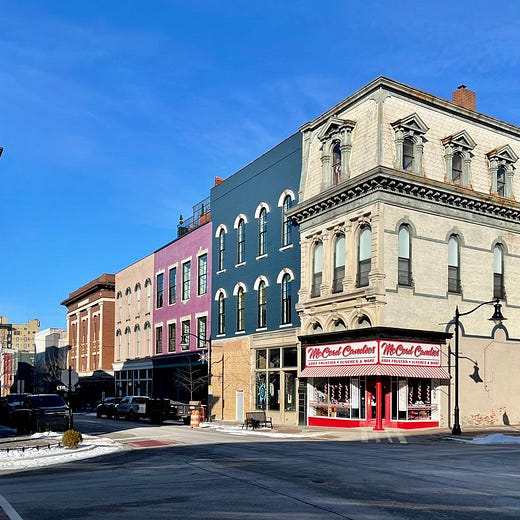


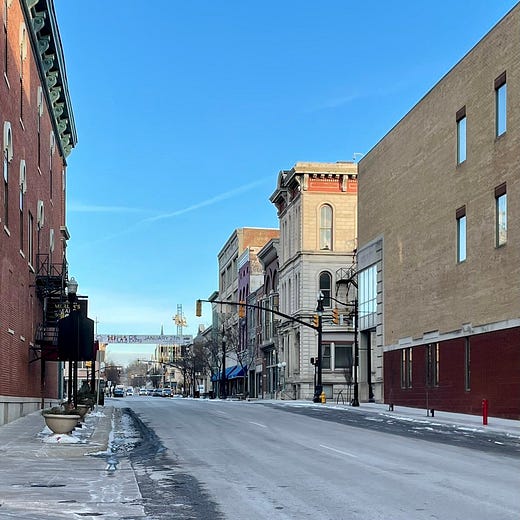





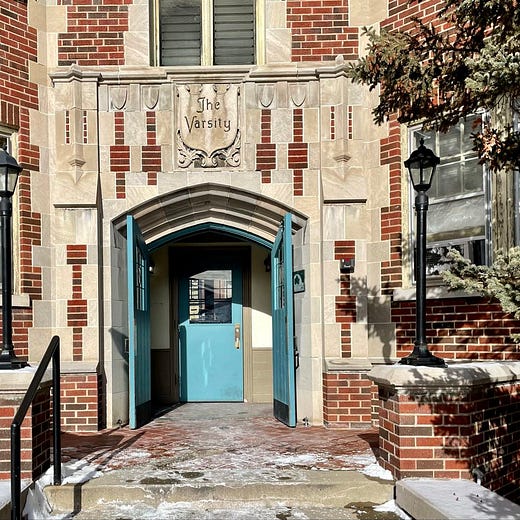
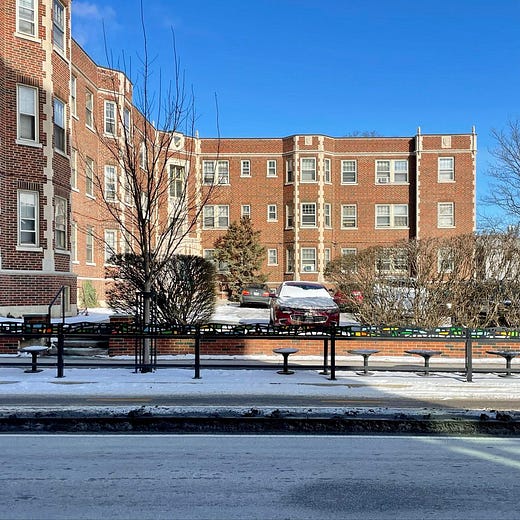
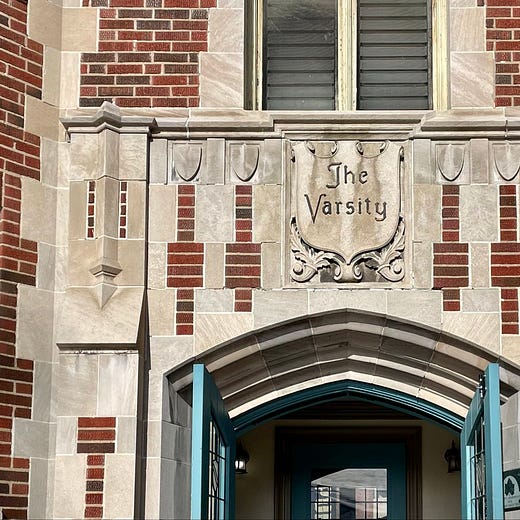
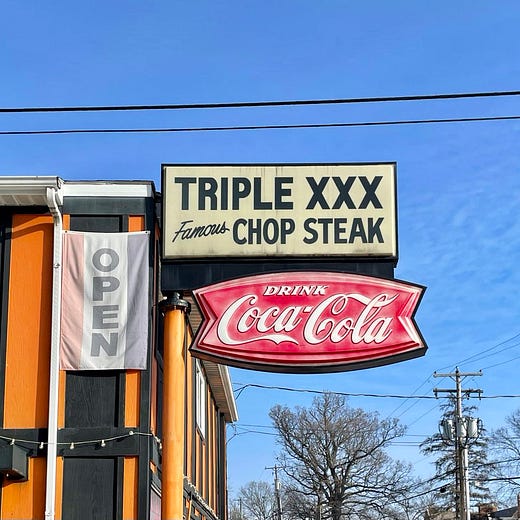
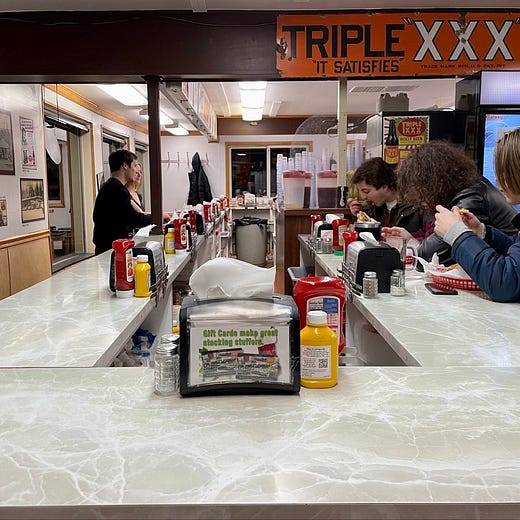
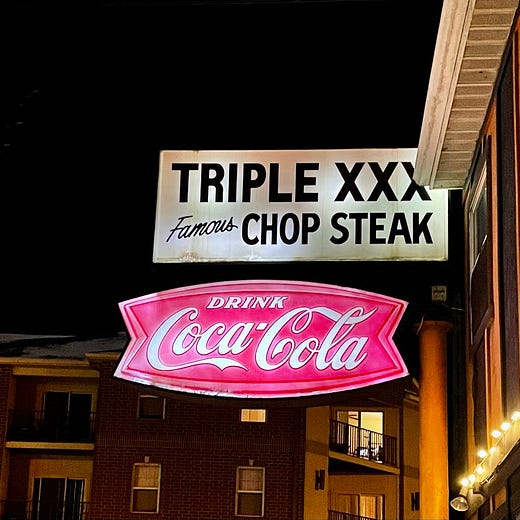



Michigander Joshua may not realise it, but Lafayette natives know that we owe the preservation of our downtown in great part to our (thankfully!) good weather. Many small towns in the Midwest suffered "The worst parts of urban renewal" at the hand of a tornado.
I’m from Columbus and while I lived there it was easy to gloss over the beautiful buildings. But whenever I go back to see my family, I get to rediscover those building constantly. It’s wonderful.